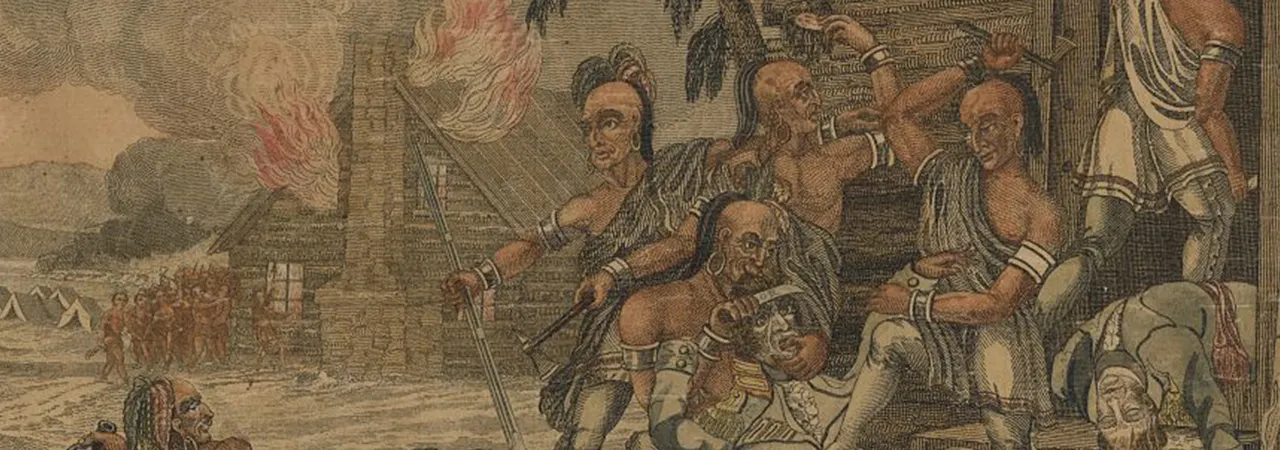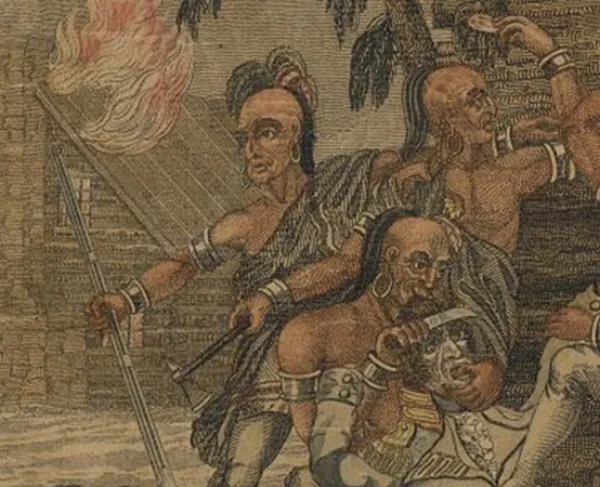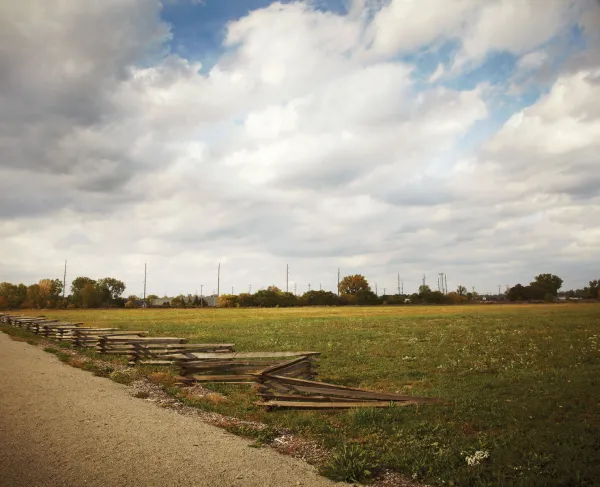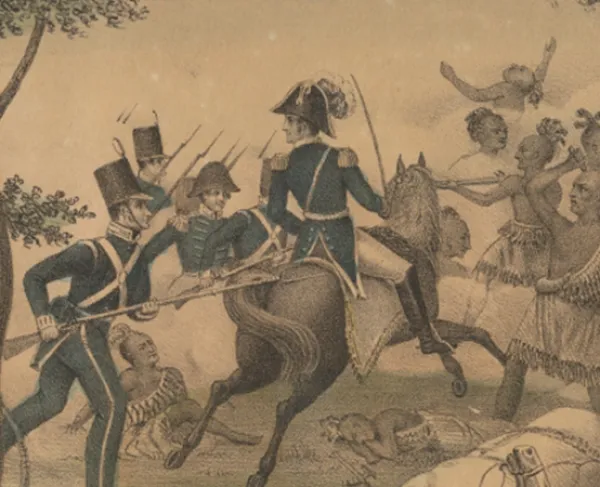The Detroit Frontier in the War of 1812

As the year 1812 opened with the United States and Great Britain spiraling toward another armed conflict the Michigan Territory emerged as a critical theater of operations. Its location north of the state of Ohio and bordering British held Upper Canada made it an avenue of invasion for the opposing sides. This prompted President James Madison's administration to dispatch Brig. Gen. William Hull’s Northwestern Army to occupy Detroit. Hull initiated his march north on June 1. It took over a month for Hull to reach the city. He faced a British command under Maj. Gen. Isaac Brock. With the ongoing war against Napoleon in Europe, few troops could be spared for service in North America forcing Brock to depend on the cooperation of the Native American Confederation under the Shawnee war chief, Tecumseh.
Hull invaded Upper Canada on July 12. While Hull prepared to assail the British at Fort Amherstburg, a small British force surrounded the U.S. garrison at Fort Mackinac. Caught by surprise, the Americans quickly surrendered. Hull, however, found the British defenses too strong to attack. He also had to protect an overextended supply line that stretched back to Ohio. Stalemated, Hull returned to Detroit in the first week of August. Buoyed by the recent victory at Fort Mackinac and Hull’s withdrawal, the British prepared to assume the offensive. A couple days later, Tecumseh, supported by British Regulars defeated a force dispatched by Hull to open his supply line at Monguagon, north of Frenchtown. With the initiative in hand, Brock played to Hull’s psychology, informing the American commander on August 15 that if he refused to surrender, he would not be able to control Tecumseh's warriors. Brock surrounded Detroit the next day, prompting Hull to capitulate. Additionally, unbeknownst to Hull, the day before the fall of Detroit, a band of Potawatomi and Winnebagos attacked the garrison evacuating Fort Dearborn, inflicting a number of casualties.
The disasters at Forts Mackinac, Detroit and Dearborn gave the British and their Indian allies firm control over much of the Old Northwest, pushing the frontier back to Fort Wayne. Surrounded in early September, the garrison managed to hold out until a relief column under Maj. Gen. William Henry Harrison arrived to break the siege. Harrison soon turned his sights on coordinating efforts to recapture Detroit. He established a base at the Maumee Rapids, south of modern Toledo, Ohio.
In the second week of January 1813 reports filtered into Brig. Gen. James Winchester of the British harassing the local population at Frenchtown. Winchester dispatched a force that relieved the community. Against Harrison’s orders, Winchester marched the rest of his command to Frenchtown. The British, under Col. Henry Procter, accompanied by 800 warriors returned on January 22. During the ensuing battle, the warriors completely smashed Winchester’s command, dealing a critical blow to Harrison’s plans. The disaster compelled Harrison to construct a fortification, christened Fort Meigs in honor of the governor of Ohio at the Rapids and await the spring thaw.
Procter, now a brigadier general, supported by Tecumseh and his warriors moved south from the vicinity of Detroit in late April to besiege Fort Meigs. Despite destroying a large force of Kentucky militia sent to reinforce Harrison, many of whom were saved from death by Tecumseh, Procter’s supplies ran low, and he abandoned the effort on May 9. Harrison’s defense of Fort Meigs helped shift the initiative to the Americans. He now stood poised to launch an offensive against Detroit.
Harrison, however, could not launch his campaign until safeguarding his own supply line and removing the British presence on nearby Lake Erie. On September 10, U.S. Master Commandant Oliver Hazard Perry defeated Captain Robert Barclay’s naval squadron, paving the way for Harrison’s final push to Detroit. Perry’s victory dealt a critical blow to Procter’s logistics. The British commander soon initiated a withdrawal eastward through Upper Canada.
Harrison’s army, assisted by Perry’s ships, arrived in Detroit on September 29. Not content to merely hold on to the post, Harrison launched a pursuit of Procter. He caught up with the British on October 5, positioned near the Thames River outside Moraviantown in Upper Canada. Harrison’s initial assault shattered Procter’s line and Tecumseh fell in the fighting that followed. The battle resulted in the disintegration of the Native confederation and secured the Old Northwest for the United States.
Related Battles
934
182
986
121
84
665





